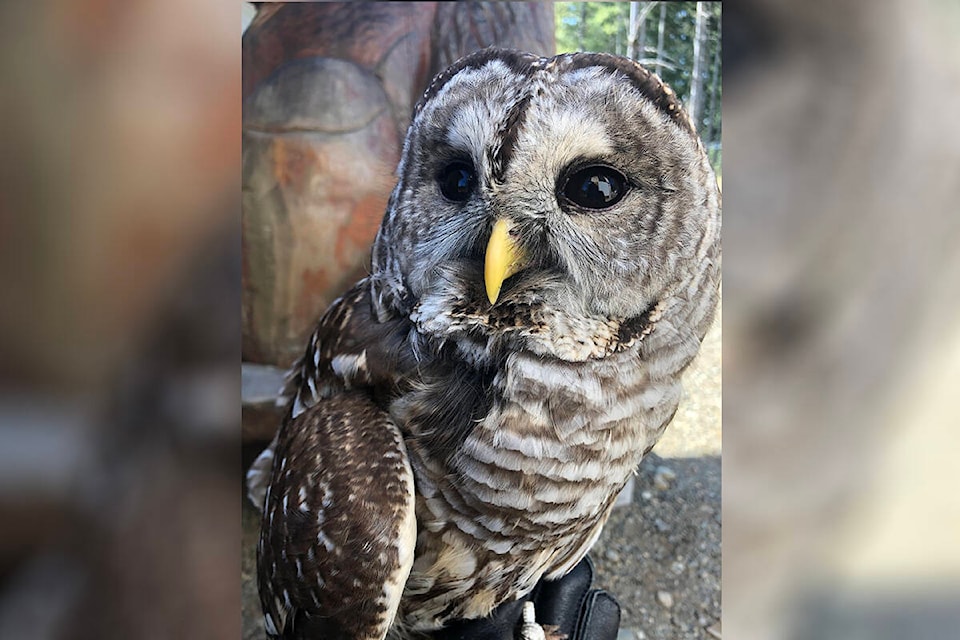Jane Sproull Thomson
Special to The Record
‘Whoo’ doesn’t love owls?
These mysterious night fliers with super-powered hearing and eyesight haunt our imagination and are the perfect Halloween icon.
After losing two of our ambassador owls during the past year to age and illness, Mountainaire Avian Rescue Society (MARS) staff and volunteers are cheered by the appointment of new Ambassador Marlowe, a barred owl with a perception problem that prevents his release into the wild. Marlowe hit a window and sustained a permanent brain injury but was rescued by the concerned homeowners. Now he lives in a permanent bachelor pad at MARS, receives ongoing care, a healthy diet and a stream of fascinated visitors.
As earlier darkness leads to increased human-owl contact, autumn is “owl time” at MARS Hospital. MARS is currently treating another barred owl, as well as a great horned owl, both hit by cars. Both sustained concussions and the great horned owl is permanently blind in one eye, but they are expected to recover well enough for eventual release.
MARS never releases birds or other patients during the Halloween period as it’s a harrowing time for wildlife. More frequently than other birds, owls arrive at wildlife hospitals after becoming entangled in “spiderweb” decorations and other netting because they home in on prey without seeing it. Incidentally, this is also why owls tend to be hit by cars: their otherwise superb vision is limited by forward-facing, tube-shaped eyes which can only look straight ahead. When focused on prey, they can’t see much else.
Fireworks displays and firecrackers are very frightening to animals. The explosions cause impact injuries with cars, windows and other objects when terrified birds startle from their roosts and fly erratically into objects, windows or roads. MARS staff report that our ambassador owls won’t eat for days after Halloween, exhibiting abnormal behaviours and often vocalizing their distress.
We can help prevent wildlife trauma by avoiding the use of fireworks and netting, not leaving any food sources near roads (such as leftover pumpkins which lure prey like mice as well as larger animals), and driving with extra caution during owls’ prime hunting hours, dusk to dawn. With so many other ways to celebrate this fun-filled holiday, can we make it a safe and happy time for our wildlife as well?
Jane Sproull Thomson is a volunteer at the Mountainaire Avian Rescue Society
